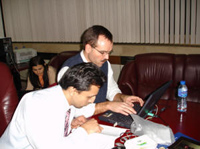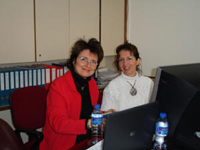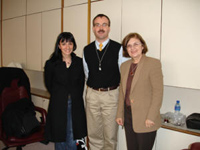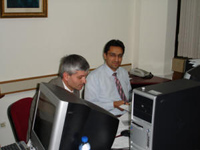| Center for Energy, Environmental, and Economic Systems Analysis (CEEESA) |  |
Research Areas:
Energy, Environment, and
Economics
National and Homeland
Security
Infrastructure Assurance
Emergency Preparedness
Social Dynamics
Policy Analysis
Core Capabilities:
Systems Analysis
Modeling, Simulation, and
Visualization
Complex Adaptive Systems
Decision Support and Risk
Management
Information Sciences
Providing Modeling Support for Turkey's First National Communication to the UNFCCC
This United Nations Development Program (UNDP)-funded activity specifically focused on the following scenarios: 1. Reference Case Results were submitted to the UNFCCC in the summer of 2006 as part of Turkey's emissions inventory report and First National Communications Report. Finally, Turkey submitted its First National Communication in January 2007. Model Transfer, Training, and Capacity Building: As part of the project, Argonne's Center for Energy, Environmental, and Economic Systems Analysis (CEEESA) transferred the latest version of ENPEP-BALANCE to several institutions. CEEESA has extensive expertise and experience in capacity building through the assistance we provide to our ENPEP-BALANCE users around the world in the form of training and implementation support. For more than 25 years, we have conducted training courses in many locations around the world and have successfully trained more than 1,300 experts from more than 90 countries in the use of our tools. ENPEP-BALANCE is actively in use in many of these countries. ENPEP-BALANCE training courses and workshops can be tailored to your specific needs and can last from a few days to a couple of weeks. Courses can be held at Argonne's facility in the Chicago area or at your facilities. Click here for information on past and upcoming training courses or click on the pictures below.
Additional Resources: For more information on this application and the ENPEP-BALANCE model, download the following brochures, presentations, and papers in pdf format:
For more information, contact CEEESA |
| U.S. Department of Energy Office of Science | UChicago Argonne LLC |
| Privacy & Security Notice | Contact Us | Search |
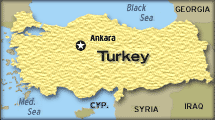 Background: In 2004, the Turkish Ministry of Environment and Forestry (MoEF) had started
preparations for submitting the first National Communication to the
United Nations Framework Convention on Climate Change (UNFCCC). The
Ministry of Energy and Natural Resources (MENR) led the activities
on updating Turkey’s Greenhouse and Gas Emissions Projections and
asked Argonne National Laboratory (Argonne) for assistance in the
effort. MENR and Argonne had had a long history of successful
collaboration, most recently under a World Bank-funded
Background: In 2004, the Turkish Ministry of Environment and Forestry (MoEF) had started
preparations for submitting the first National Communication to the
United Nations Framework Convention on Climate Change (UNFCCC). The
Ministry of Energy and Natural Resources (MENR) led the activities
on updating Turkey’s Greenhouse and Gas Emissions Projections and
asked Argonne National Laboratory (Argonne) for assistance in the
effort. MENR and Argonne had had a long history of successful
collaboration, most recently under a World Bank-funded 